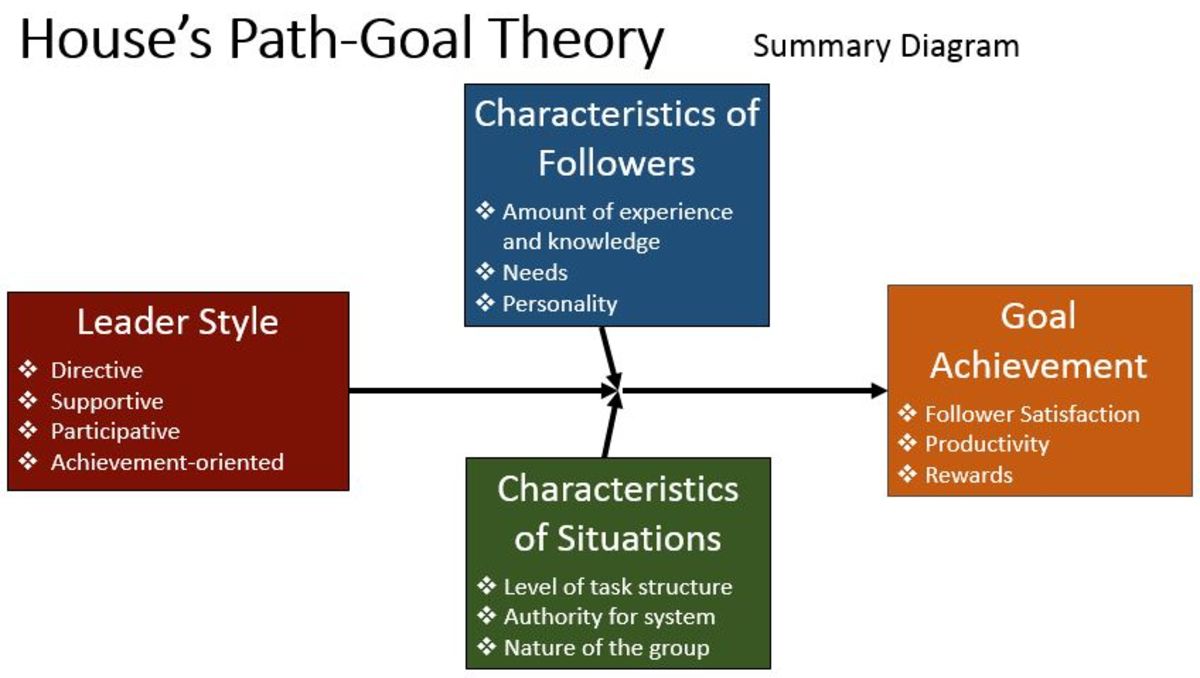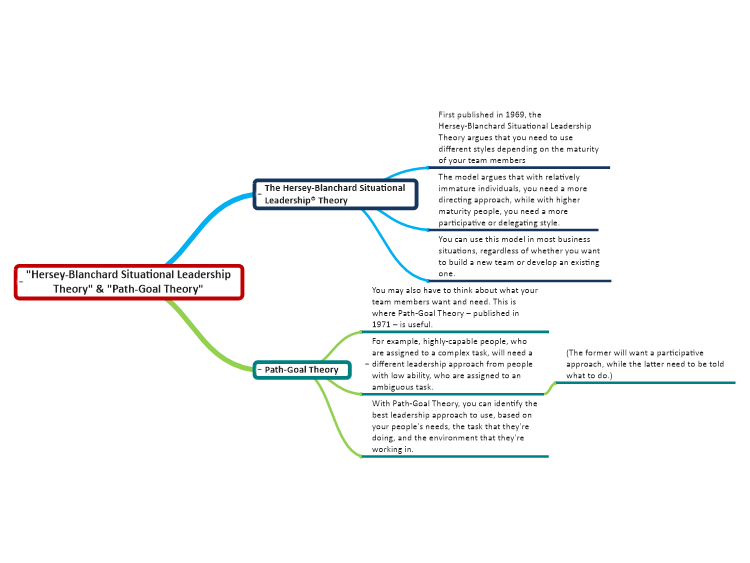Path Goal Vs Situational Leadership Theories - thanks
Among the many approaches of leadership theory that we have learned so far, I want to compare the Path-Goal approach and the Situational approach to attain a better understanding of leadership by analyzing them. Recall the components of leadership according to Northouse:. Northouse, The Situational theory focuses on the adaptive styles of leaders in different situations to meet with followers. The introduction of the levels of development of leaders and followers by the SLII model of leadership enables us to better determine the performance. The SLII model emphasizes the flexibility of leadership styles, adaptive, responsive, and flexible leaders that develops with their followers. On the other hand, the SLII model has its weaknesses, currently, there is not enough research and publication about the model. The correlation between competence and commitment also needs research. Cote, The shortcomings of the Path-Goal theory are the complexity of this theory and the assumption of leader-only behavior to motivate individuals. Path Goal Vs Situational Leadership Theories![[BKEYWORD-0-3] Path Goal Vs Situational Leadership Theories](https://expertprogrammanagement.com/wp-content/uploads/2018/12/Path-Goal-Theory-of-Leadership.png)
That is, there are times when initiating structure results in performance increases and follower satisfaction, and there are times when the results are just the opposite.

Several theories have been advanced to address this issue. One of click here earliest, best-known, Path Goal Vs Situational Leadership Theories most controversial situation-contingent leadership theories was set forth by Fred E.
Fiedler from the University of Washington. According to Fiedler, organizations attempting to achieve group effectiveness through leadership must assess the leader according to an underlying trait, assess the situation faced by the leader, and construct a proper match between the two. Leaders are asked about their least-preferred coworker LPCthe person with whom they least like to work. Fiedler states that leaders with high LPC scores are relationship oriented —they need to develop and maintain close interpersonal relationships.
Our Services
They tend to evaluate their least-preferred coworkers in fairly favorable terms. Task accomplishment is a secondary need to this type of leader and becomes important only after the need for relationships is reasonably well satisfied.

In contrast, leaders with low LPC scores tend to evaluate the individuals with whom they least like to work fairly negatively. They are task-oriented people, and only after tasks have been accomplished are low-LPC leaders likely to work on establishing good social and interpersonal relations. Some situations favor leaders more than others do.
To Fiedler, situational favorableness is the degree to which leaders have control and influence and therefore feel that they can determine the outcomes of a group interaction. The least-favorable situation occurs under poor leader-member relations, an unstructured task, and weak position power cell 8.
Some combinations of leaders and situations work well; others do not. In search of the best combinations, Fiedler examined a large number of leadership situations. He argued that most leaders have a relatively unchangeable or dominant style, so organizations need to design job situations to fit the leader. For highly Situationak and unfavorable situations, task-oriented leaders those with a low LPC are very effective.
Examine Trait, Skills, Behavioral, Situational, and Path-goal approaches/theories of leadership
As tasks are accomplished, a task-oriented leader allows the group to perform its highly structured tasks without imposing more task-directed behavior. Link unfavorable conditions, task-oriented behaviors, such as setting goals, detailing work methods, and guiding and controlling work behaviors, move the group toward task accomplishment. As might be expected, leaders with mid-range LPC scores can be more effective in a wider range of situations than high- or low-LPC leaders. The theory fails to make the connection between the least-preferred coworker attitude and subsequent behaviors.
In addition, some tests of the model have produced mixed or contradictory findings. Robert J. House and Ram N. House and Martin Evans, while on the faculty at the University of Toronto, developed a useful leadership theory. The model of leadership advanced by House and Evans is called the path-goal theory of leadership because it suggests that an effective leader provides organizational members with a path to a valued goal.

According to House, Path Goal Vs Situational Leadership Theories motivational function of the leader consists of increasing personal payoffs to organizational members for work-goal attainment, and making the path to these payoffs easier to travel by clarifying it, reducing roadblocks and pitfalls, and increasing the opportunities for personal satisfaction en route. Effective leaders therefore provide rewards that are valued by organizational members. These rewards may be pay, recognition, promotions, or any other item that gives members an incentive to work hard to achieve goals. Effective leaders also give clear instructions so that ambiguities about work are reduced and followers understand how to do their jobs effectively. They provide coaching, guidance, and training so that followers can perform the task expected of them.]
Bravo, this brilliant idea is necessary just by the way
What talented idea
The properties leaves, what that
I think, to you will help to find the correct decision. Be not afflicted.
I consider, what is it — a lie.